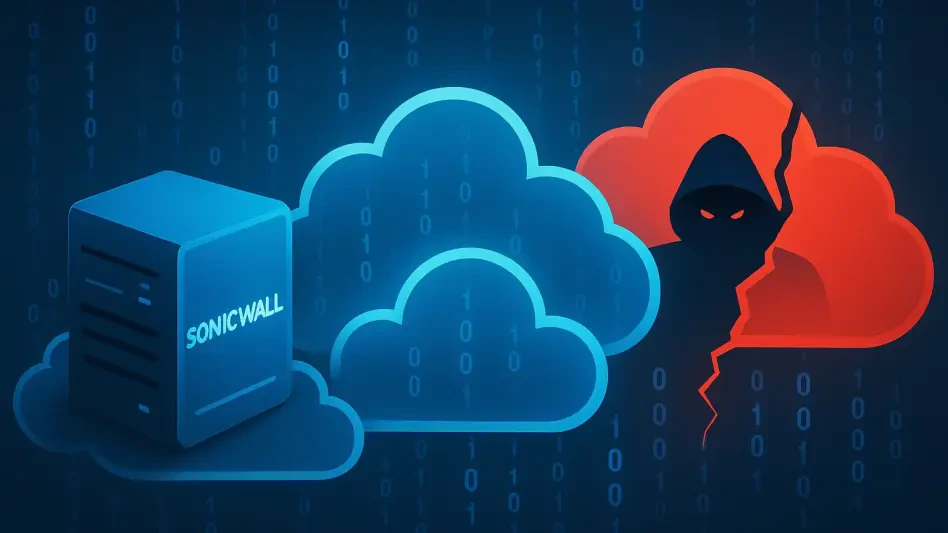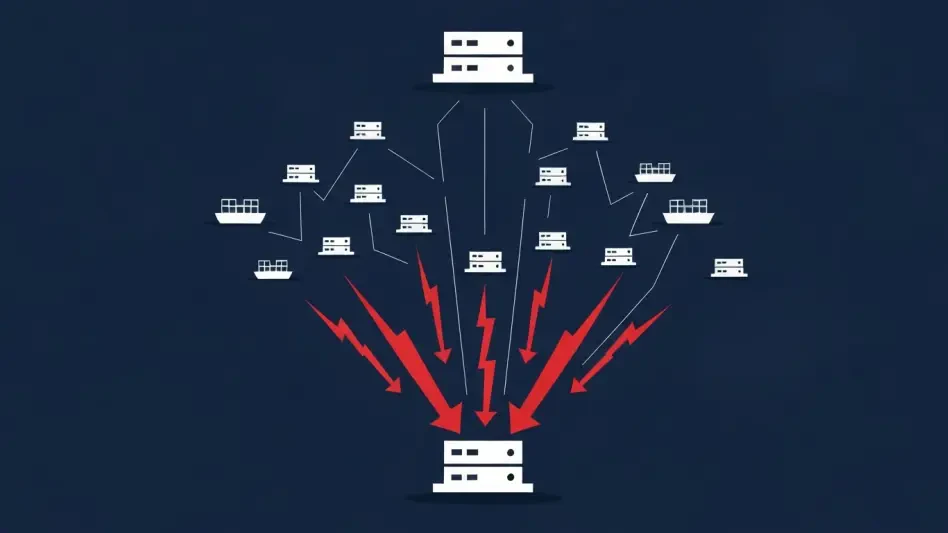In a startling revelation that has sent shockwaves through the cybersecurity community, a major security incident has compromised the cloud backup files of every customer using SonicWall’s firewall configuration backup service, laying bare the fragility of cloud-stored data. This breach, uncovered through a thorough investigation with support from cybersecurity experts, not only exposes critical configuration files but also raises urgent questions about the safety of relying on third-party cloud services for sensitive information. As the scale of the breach becomes clear, it serves as a sobering reminder of the ever-evolving threats in the digital landscape, pushing both companies and their clients to rethink security protocols and prioritize robust defenses against increasingly sophisticated attacks.
Unveiling the Scope and Impact of the Incident
Understanding the Depth of the Compromise
The gravity of the SonicWall security breach cannot be overstated, as it impacts the entirety of the customer base utilizing the company’s cloud backup service for firewall configurations. Initially, the issue was downplayed with estimates suggesting a small fraction of users were affected, but deeper investigation revealed a far more alarming truth: every single customer’s backup files were accessed by unauthorized parties. This breach was facilitated through relentless brute force attacks targeting the cloud backup API, a method that exploited vulnerabilities in the system’s access controls. The compromised data includes intricate details such as network settings, firewall rules, VPN policies, and encrypted user credentials, creating a potential goldmine for malicious actors. Even though the data is encoded and credentials are protected by strong encryption standards, the mere possession of these files could enable targeted attacks on related systems, amplifying the risk to affected organizations.
Assessing the Risks Posed by Exposed Data
Beyond the sheer scale of the breach, the nature of the exposed information presents significant dangers to SonicWall customers. The configuration backup files, while encrypted with robust methods like AES-256 for newer devices and 3DES for older models, still hold sensitive insights into system architectures and security setups. Malicious actors could potentially use this data to map out network vulnerabilities or craft precise attacks tailored to specific firewall configurations. Although built-in administrator accounts are not included in these backups, the recommendation to update all credentials reflects the seriousness of the potential fallout. This incident underscores a critical reality in cybersecurity: even encrypted data, when accessed by unauthorized entities, can serve as a stepping stone for broader exploitation. Companies relying on these backups must now grapple with the urgent task of assessing their exposure and fortifying their defenses against possible future incursions stemming from this breach.
Response and Remediation Strategies
Immediate Actions for Affected Customers
In response to the unprecedented breach, SonicWall has issued clear guidance to help customers mitigate the risks associated with the exposed configuration files. Affected users are urged to log into their accounts on the official portal to access a detailed Product Management Issue List, which categorizes impacted devices based on priority levels. Devices labeled as high priority, particularly those with internet-facing services, demand immediate attention, while lower-priority and inactive units follow in the remediation queue. The company emphasizes the importance of reviewing and resetting credentials for all services active during the backup period to prevent unauthorized access. Additionally, updated preference files have been made available to assist in the recovery process, aiming to streamline efforts to secure compromised systems. These steps are critical for organizations to regain control over their security posture and minimize the potential for exploitation by attackers leveraging the stolen data.
Long-Term Implications and Security Enhancements
Looking beyond immediate remediation, the SonicWall breach has sparked a broader conversation about the security of cloud-based backup services for critical infrastructure. The company’s collaboration with external cybersecurity experts to investigate the incident and strengthen its cloud infrastructure signals a commitment to preventing similar occurrences. However, the trust of customers may be harder to rebuild, as many question the reliability of third-party cloud storage for sensitive data. Some organizations are already exploring alternatives, such as on-premises or private cloud solutions, to maintain greater control over their backups. This incident serves as a catalyst for the industry to prioritize robust API security and implement advanced protective measures against brute force attacks. As SonicWall works to enhance its systems, the broader cybersecurity community must also take note, recognizing that a single point of failure can have widespread repercussions, necessitating vigilance and proactive strategies to safeguard digital assets.
Reflecting on Lessons Learned
A Wake-Up Call for Cloud Security Practices
Reflecting on the SonicWall incident, it becomes evident that the breach exposed a critical vulnerability in the reliance on cloud services for storing sensitive backup data. The successful brute force attacks on the backup API highlighted a pressing need for fortified access controls and continuous monitoring to detect and thwart such threats in real time. This event serves as a stark reminder that even established companies with strong reputations in cybersecurity are not immune to sophisticated attacks. The comprehensive compromise of all customer backup files drives home the importance of encryption, but also the limitations of relying solely on it as a defense mechanism. In the aftermath, the industry is prompted to reevaluate the balance between convenience and security, pushing for solutions that offer both without compromising on either. The incident underscores that proactive measures, rather than reactive fixes, are essential to stay ahead of evolving cyber threats.
Building a Resilient Future in Cybersecurity
As the dust settles on this significant breach, the focus shifts to actionable steps that have been taken to prevent recurrence and bolster trust in cloud-based systems. SonicWall has implemented additional hardening measures to secure its infrastructure, while customers are encouraged to adopt best practices like regular credential updates and risk-based prioritization of devices. The collaboration with external experts has paved the way for enhanced security protocols, setting a precedent for transparency and accountability in handling such crises. Moving forward, the incident urges a collective push toward developing more secure backup solutions, whether through advanced encryption techniques or decentralized storage options. It also emphasizes the value of educating organizations on the risks of cloud storage and equipping them with tools to make informed decisions. Ultimately, the breach has catalyzed a renewed commitment to resilience, ensuring that lessons from this event shape a stronger, more secure digital landscape for all stakeholders.








